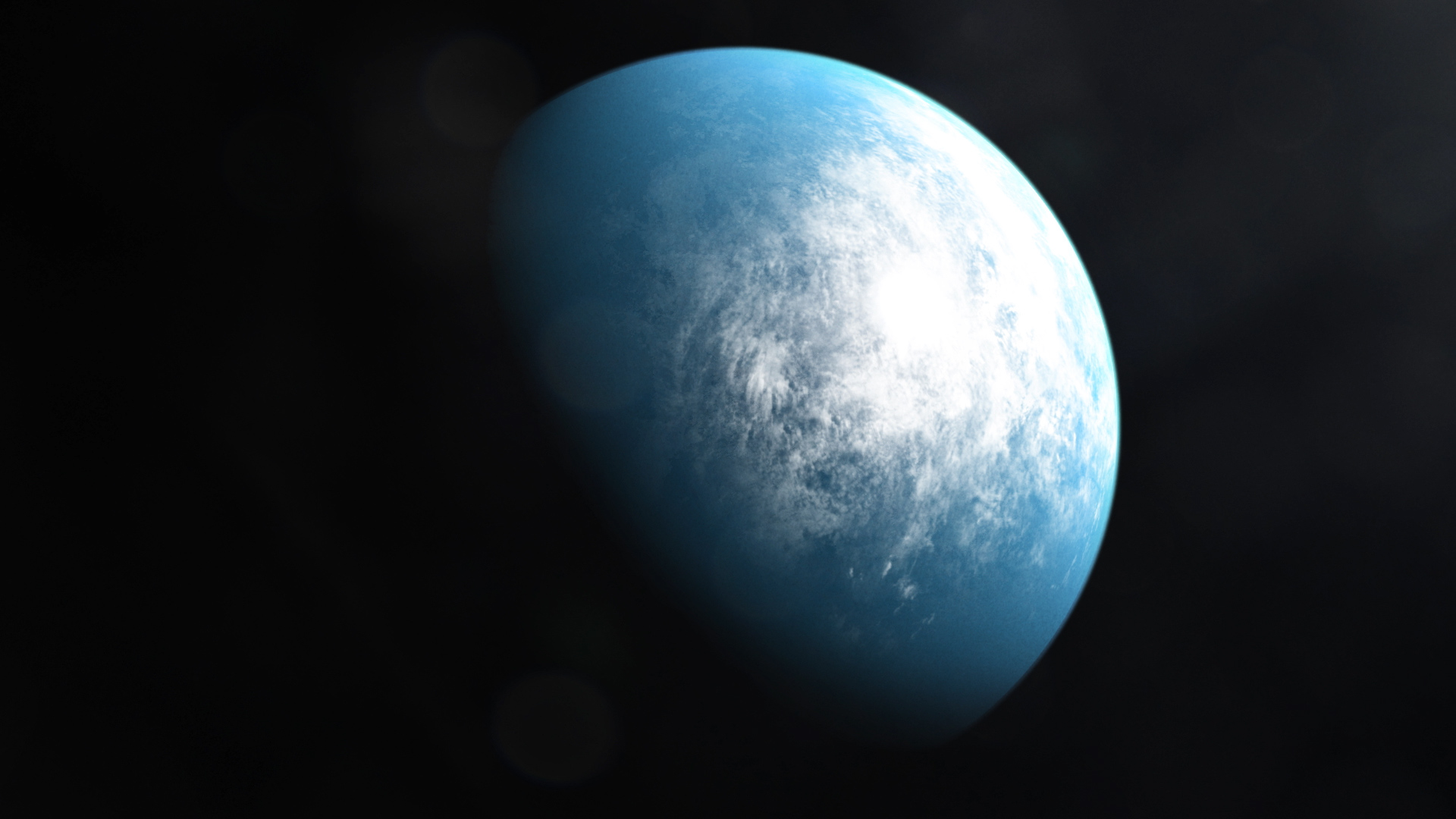TESS Finds System’s Second Earth-Size World
Watch to learn about TOI 700 e, a newly discovered Earth-size planet with an Earth-size sibling.
Credit: NASA/JPL-Caltech/Robert Hurt/NASA’s Goddard Space Flight Center
Music Credit: Dream Box by Carl David Harms
Watch this video on the NASA Goddard YouTube channel.
Using data from NASA’s Transiting Exoplanet Survey Satellite, scientists have identified an Earth-size world, called TOI 700 e, orbiting within the habitable zone of its star – the range of distances where liquid water could occur on a planet’s surface. The world is 95% Earth’s size and likely rocky.
Astronomers previously discovered three planets in this system, called TOI 700 b, c, and d. Planet d also orbits in the habitable zone. But scientists needed an additional year of TESS observations to discover TOI 700 e.
TOI 700 is a small, cool M dwarf star located around 100 light-years away in the southern constellation Dorado. In 2020, scientists announced the discovery of the Earth-size, habitable-zone planet d, which is on a 37-day orbit, along with two other worlds.
The innermost planet, TOI 700 b, is about 90% Earth’s size and orbits the star every 10 days. TOI 700 c is over 2.5 times bigger than Earth and completes an orbit every 16 days. The planets are probably tidally locked, which means they spin only once per orbit such that one side always faces the star, just as one side of the Moon is always turned toward Earth.
TOI 700 e, which may also be tidally locked, takes 28 days to orbit its star, placing planet e between planets c and d in the so-called optimistic habitable zone.
Scientists define the optimistic habitable zone as the range of distances from a star where liquid surface water could be present at some point in a planet’s history. This area extends to either side of the conservative habitable zone, the range where researchers hypothesize liquid water could exist over most of the planet’s lifetime. TOI 700 d orbits in this region.
Finding other systems with Earth-size worlds in this region helps planetary scientists learn more about the history of our own solar system.
Newly discovered planet TOI 700 e orbits a dwarf star in this animation. Three other known planets, TOI 700 b, c, and d, are also visible.
Credit: NASA/JPL-Caltech/Robert Hurt
This animation shows the architecture of the TOI 700 system. At first, only planets b, c, and d are shown. Planet d is in the star’s conservative habitable zone (green), the range of distances from the star where researchers hypothesize liquid water could exist over most of a planet’s lifetime. The optimistic habitable zone (yellow) fades in, containing planet TOI 700 e. The optimistic zone is the range of distances where liquid surface water could be present at some point in a planet’s history.
Credit: NASA’s Goddard Space Flight Center
Same as above, but showing only the original three planets and the conservative habitable zone.
Credit: NASA’s Goddard Space Flight Center
Watch how successive TESS observations allowed scientists to spot TOI 700 e using the transits (pink curve) of TOI 700 e.
Credit: NASA’s Goddard Space Flight Center.

Newly discovered Earth-size planet TOI 700 e orbits within the habitable zone of its star in this illustration. Its Earth-size sibling, TOI 700 d, can be seen in the distance.
Credit: NASA/JPL-Caltech/Robert Hurt

TOI 700 e, illustrated here at left, is around 95% Earth’s size and likely rocky. It’s on a 28-day orbit around its star. At right, TESS observations of the planet’s transit.
Credit: NASA/JPL-Caltech/Robert Hurt/NASA’s Goddard Space Flight Center

TOI 700 b, illustrated here, is about 90% Earth’s size and likely rocky. It orbits its star every 10 days. At right, TESS observations of the planet’s transit.
Credit: NASA's Goddard Space Flight Center/Chris Smith (USRA)

In 2020, a team of scientists originally calculated that TOI 700 b was almost exactly Earth-size. An extra year of TESS data reduced the size of the planet by about 10%.
Credit: NASA's Goddard Space Flight Center/Chris Smith (USRA)

This illustration compares the 2020 (white circle) and 2023 size estimates of TOI 700 b.
Credit: NASA's Goddard Space Flight Center/Chris Smith (USRA)

TOI 700 c, illustrated here, is 2.5 times Earth’s size and likely gaseous. It orbits every 16 days. At right, TESS observations of the planet’s transit.
Credit: NASA's Goddard Space Flight Center/Chris Smith (USRA)

In 2020, a team of scientists originally calculated that TOI 700 c was 2.6 times Earth’s size. An additional year of TESS data reduced the size of the planet by about 1%.
Credit: NASA's Goddard Space Flight Center/Chris Smith (USRA)

This illustration compares the 2020 (white circle) and 2023 size estimates of TOI 700 c.
Credit: NASA's Goddard Space Flight Center/Chris Smith (USRA)

TOI 700 d, illustrated here, is almost exactly Earth’s size, likely rocky, and orbits it star every 37 days. At right, TESS observations of the planet’s transit.
Credit: NASA's Goddard Space Flight Center/Chris Smith (USRA)

In 2020, a team of scientists originally calculated that TOI 700 d was 1.2 times Earth’s size. An additional year of TESS data reduced the size of the planet by about 10%.
Credit: NASA's Goddard Space Flight Center/Chris Smith (USRA)

This illustration compares the 2020 (white circle) and 2023 size estimates of TOI 700 d.
Credit: NASA's Goddard Space Flight Center/Chris Smith (USRA)
For More Information
Credits
Please give credit for this item to:
NASA's Goddard Space Flight Center. However, individual items should be credited as indicated above.
-
Science writer
- Jeanette Kazmierczak (University of Maryland College Park)
-
Producers
- Sophia Roberts (Advocates in Manpower Management, Inc.)
- Scott Wiessinger (KBR Wyle Services, LLC)
-
Narrator
- Sophia Roberts (Advocates in Manpower Management, Inc.)
-
Animator
- Robert Hurt (IPAC)
-
Scientist
- Emily Gilbert (NASA/JPL)
Release date
This page was originally published on Tuesday, January 10, 2023.
This page was last updated on Wednesday, May 3, 2023 at 11:43 AM EDT.
